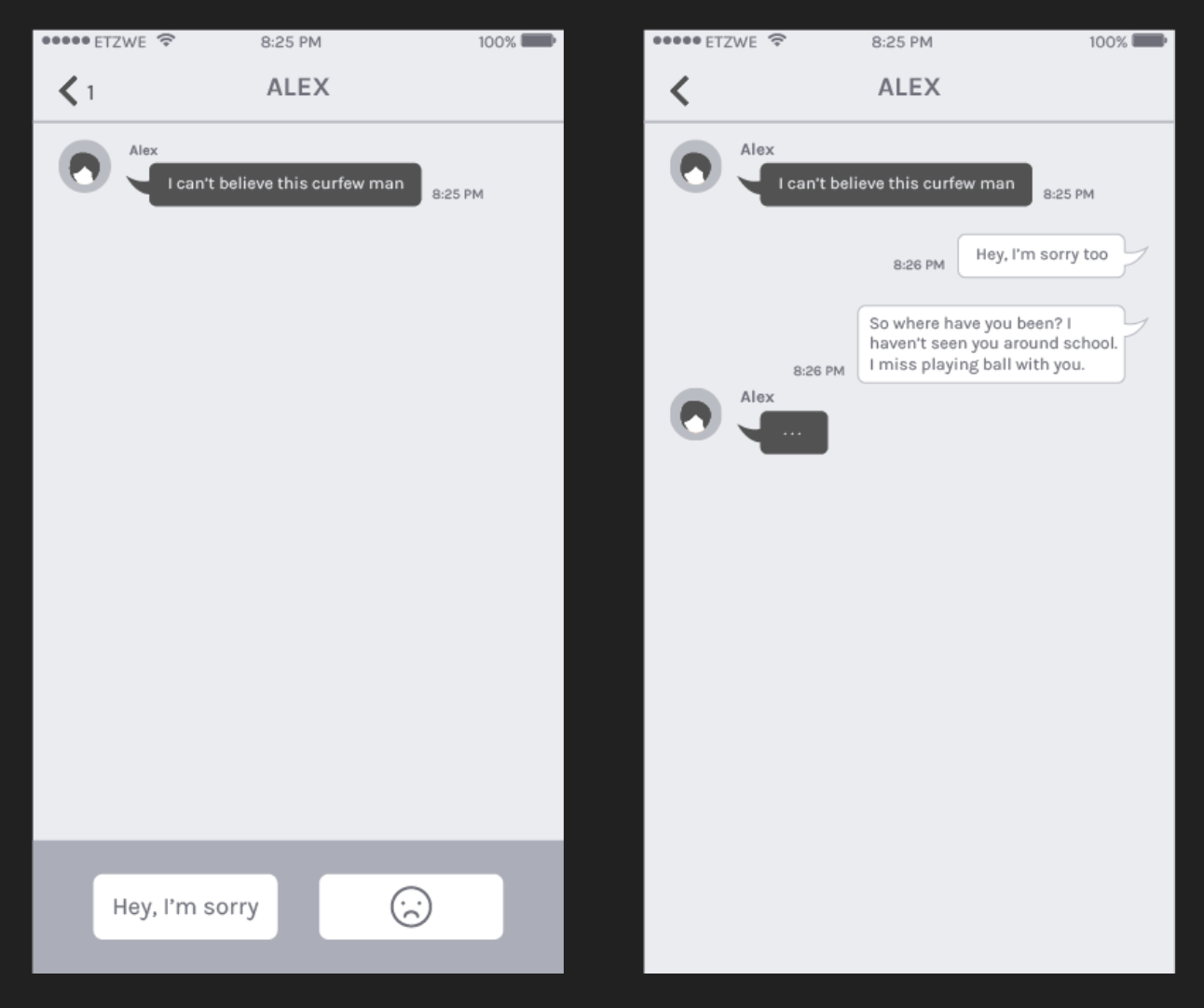Team: Ren Du ( head developer) | Pornsima ( Graphic Designer and writer) | Nyantee Asherman (ux researcher, survey and data collection, project manager)
The Problem
USHMM challenged us to create an interactive experience that could engage young visitors in the museum and help them process the gravity of the content they saw while at the museum, even after their visit. USHMM saw that young visitors to the museum were often so struck by the gravity of the history of the Holocaust that they often disengaged with the material after leaving or had difficulty processing it. USHMM wanted to challenge the notion that games couldn’t be an effective way to get people to engage with serious and important content.
Solution
After spending a few days observing museum visitors walk through the museum and noting their responses to various exhibitions, interactive features, and content, my team — consisting of myself, a designer, and a developer — created a concept for an interactive play experience in which users receive texts from multiple characters whose stories are inspired by real, historical accounts of teenagers living under fascist reign. The app, titled joind, was meant to provoke teenage players to think about ethics, group think, peer pressure, and activism.
Our product team would develop joind from the ideation phase to its release. Joind now resides in the museum’s archive. On the project, I acted as UX researcher and product designer — my primary roles were conducting research, product development from research, and content writing. I adapted the video transcripts in the museum for joind’s content.
Prototyping
We began by paper prototyping joind. We made a text-like application by moving long scrolls of paper through "screens" made from card stock. We acted as the operating system on one side of the table and players stood on the opposite side reading the incoming "texts" from the characters in our game.
Feedback from the initial playtest was mixed but gave us a clear direction for iterating on joind. Testing revealed that the storytelling and game mechanics needed to be improved. See below for a longer list of user feedback/insights.
Students enjoy playing as a group
The pace of the game was too fast
Dialogue between characters in group chat could be confusing
The chaotic pace and play of the game made it a good simulator
of actual texting but had to be balanced
Storylines had gaps that needed to be filled
Players choices in the game had to be more meaningful
Concerns about decontextualizing serious historical events by adding contemporary scenarios
Valid concerns from teachers about simulating traumatic experiences
From initial tests came several “How Might We”s
How might we increase agency/ make players’ decisions more meaningful
while keeping players embedded in a storyline?
How might we effectively embed historical account into a contemporary
application without losing accuracy ?
How might we make the game more engaging while maintaining its educational content?
How might we build the students’ investment in the characters and storylines in the app?
How might we build the social group play aspect of the game?
Second Playtest
After iterating on the initial prototype, I conducted a focus group with students and teachers visiting the museum.
Feedback from teens:
Teens on the younger end of our target audience found the game more engaging
Teens were able to identify key themes and lessons from the stories of the characters they were texting
Teens wanted more realistic language and more choices
Older teens (Ages 16+) were less invested in the game's characters, who they perceived to be less mature
Teen players enjoyed the social aspect of the game, but it remains to be seen how it might be played alone
Challenges
Ultimately, though students mostly enjoyed game play and were able to cull important lessons and themes from the game’s narrative, interviews revealed that teachers and museum staff held valid concerns about whether the app could accurately and sensitively portray the trauma and events of the Holocaust and its survivors’ experiences. Through research, I was able to discover that the major challenges we faced did not revolve around game mechanics or functionality but cultural beliefs about the appropriate use of digital play experiences and games for education.
Understanding any historical event requires the review of several scholarly resources, which aggregated, could provide a more holistic perspective on the event at hand. As a team, we realized that we must shift our marketing/framing of joind, so it reflected that our application was meant to be one of many educational resources used to give students a holistic understanding of the Holocaust. Research helped us build a context around joind that was previously missing and helped users better adapt to the new tool.
In my conversations with museum stakeholders and teachers, I made the case for joind while maintaining an open forum for stakeholders to be heard and have their feedback considered. Ultimately, I believe the product would have benefited from the ability to be audited or reviewed by some of the survivors or survivor relatives in the museum’s network.
Art Direction
The graphic designer on our team produced three initial designs for the application. After our first meeting with stakeholders at the Holocaust Museum, we agreed to go with a more modern look for the gameplay, so that it was a more immersive and believable experience for players.



